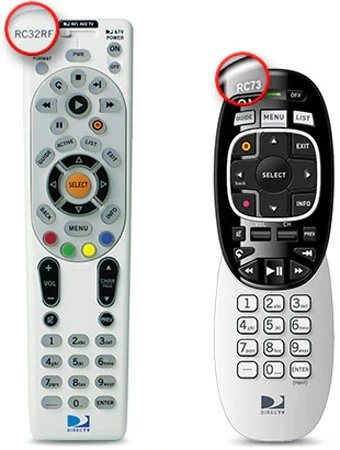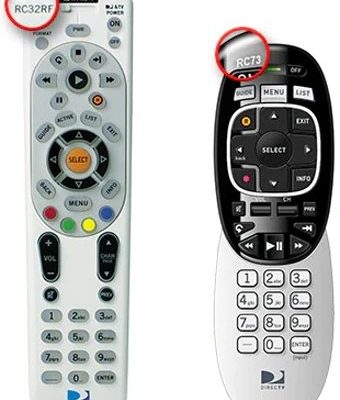
Here’s the thing: programming a Vizio TV remote for older TVs can be a lifesaver if you’re tired of playing “which-remote-does-what” every time you want to watch something. Vizio remotes aren’t just for Vizio TVs—they can sometimes sync up with other brands, including your “old reliable” television, with the right tricks. But there’s a bit more to it than just pushing random buttons and hoping. Let’s break it all down in real, human terms.
Understanding Vizio Remotes: What Makes Them Different?
If you’re picturing a sea of identical remote controls, it’s easy to assume they’re all basically the same. Nope—Vizio remotes have a few quirks. While they’re designed for Vizio TVs, many are what’s known as “universal remotes,” meaning they can be programmed to control other brands and older televisions too. But here’s where it gets interesting: not every Vizio remote supports this.
Some Vizio remotes are “dedicated,” which means they’re locked in to Vizio’s newer models and won’t cooperate with your decade-old TV. Others, though, have extra settings, buttons, and even a few hidden codes stashed away, just waiting for you to unlock their secret powers. Universal Vizio remotes usually look a little more beefy—they might have buttons for DVD players, cable boxes, or even an “input” button that cycles through different devices.
You might be wondering, why didn’t Vizio just make every remote universal? I ask myself the same thing every time I’m hunting for batteries. Probably to keep costs down, or because not everyone wants or needs advanced features. But if you’re lucky, your Vizio remote falls into that magical “universal” category, opening up the possibility of pairing it with your older TV.
How Programming Works: Codes, Syncing, and Setup
Programming your Vizio remote for an older TV is a bit like teaching a dog a new trick. It’s all about sending the right signals—and a little patience. First off, remotes use something called a “code”—that magic number you enter to get your remote and TV to speak the same language. Every brand and model might have a slightly different code. Think of them as secret handshakes: if you get it wrong, the TV just ignores you.
Here’s the basic routine most Vizio universal remotes follow:
- Put your remote into programming mode—this usually means holding down the “Setup” or “Program” button until a light blinks.
- Enter the specific code for your older TV (not all codes will work, so you might have to try a few).
- Test the remote—if your TV responds, congrats! If not, repeat the steps with another code.
Syncing the remote this way lets you use most (but sometimes not all) of the TV’s functions. For example, basic things like power, volume, and input switching almost always work. Fancier features? Not guaranteed. Kind of like when your friend’s universal charger only charges your phone but won’t do fast-charging—helpful, but not perfect.
Finding and Using TV Codes: A Real-World Guide
Honestly, finding the right code can feel like you’re hunting for buried treasure. The code list usually comes in the manual, and if you’ve lost yours (guilty as charged), Vizio’s support site or a quick search online will save the day. Expect to see a long table of codes for every TV brand you can imagine.
Let me explain how you’d actually do this. Suppose you have an old Panasonic TV. You scroll through the list, see a few codes under “Panasonic,” and pick the first one (say, 0017). With your TV on, you grab the Vizio remote, press and hold “Setup” till the light blinks, then punch in 0017. If your TV flashes or the volume changes, you’re golden. If not, try the next code.
You might have to try two, three, or even ten codes to finally get things working. Don’t lose your patience—this is super common, and you’re not doing anything wrong!
Keep in mind, each time you try a new code, you usually need to start the programming process from scratch. Take a deep breath, grab a snack, and work your way down the list. It’s more trial-and-error than high-stakes science.
Battery Life, Signal Strength, and Other Sneaky Problems
Alright, let’s talk about something that trips up a lot of beginners: the *batteries*. Weak batteries can make you think you’ve totally failed, when really your remote is just whispering to your TV instead of yelling. Always, always pop in fresh batteries before you start programming.
Another thing—older TVs might need a stronger signal or might have slightly “quirky” infrared sensors. Sometimes, simply standing closer or angling the remote differently does the trick. If your remote seems to work for a while and then quits, double-check that those batteries are still strong and well-seated.
I’ve also found that resetting the remote can help when things get buggy. To reset, you might hold down both the “Power” and “Volume Down” buttons for ten seconds, or whatever the manual says. This wipes out any old pairings or glitches, giving you a fresh start for the programming process.
Troubleshooting Sync Issues: Why Won’t It Work?
You’d think after all this, programming a Vizio TV remote for older TVs would just work. But reality loves a good plot twist. If you’re having trouble getting your remote and TV to sync, don’t panic—here’s where the detective work begins.
First, double-check that your TV is actually compatible. Some really old models just don’t play nice with modern universal remotes, or they use different infrared codes. It’s not you, it’s them. If your remote supports “learning mode,” you can sometimes “teach” it the commands from your original TV remote, but not all Vizio remotes have this feature.
Next, try the obvious stuff: make sure you’re pointing the remote directly at the TV, there’s nothing blocking the sensor, and, yes, batteries are fresh. If only some buttons work (maybe volume, but not power), that usually means the code is close but not perfect. Try again with another code.
If you run through the entire code list and still strike out, you might need to accept that this particular remote/TV combo just isn’t going to happen. As much as I hate to admit it, sometimes technology just isn’t compatible.
Universal Remotes vs. Dedicated Remotes: What’s Best for Older TVs?
If your Vizio remote isn’t playing nice, don’t toss it in frustration. There are *dedicated remotes* (the ones built for a single brand or device) and *universal remotes* (those multi-talented, jack-of-all-trades types). Universal remotes, including many Vizio models, are way more flexible if you’re dealing with older TVs from different brands.
Here’s a simple comparison:
| Dedicated Remote | Works perfectly, but only with the TV or device it was made for. Dead simple, but useless if you want to control multiple things. |
| Universal Remote | May require a little more effort to set up, but can juggle several devices—including older TVs, soundbars, and streaming sticks. Slightly more buttons, but way more power. |
If your Vizio-branded remote just won’t sync up despite your best efforts, consider grabbing a third-party universal remote. There are tons out there—some as cheap as takeout dinner—and most include even more extensive code lists for all sorts of quirky old TVs.
Keeping It Running Smoothly: Maintenance and Quick Fixes
Once you’ve got your Vizio TV remote working with your older TV, most people just want to forget about it and get back to binge-watching their favorite shows. Fair! But you’ll save yourself a headache by keeping an eye on a few things. For starters, keep a stash of fresh batteries handy. Dead batteries are the
Give your remote a gentle wipe-down from time to time—crumbs and dust can mess with the buttons or block the signal (and honestly, it’s wild how much pizza grease can end up on a remote). If you ever need to reset it or reprogram for a new TV, don’t toss out any code lists or manuals. Stash them next to your TV, or better yet, take a photo so you never lose them.
Remember: Technology is supposed to make life easier, but sometimes it needs a little love and patience to behave.
If something isn’t working, don’t be afraid to start over. Unplug the TV, reset the remote, and go through the pairing process again. Nine times out of ten, a fresh start solves random bugs.
Wrapping Up: Getting the Most Out of Your Vizio Remote
If you’re still with me, you’re basically a remote control ninja now. Programming a Vizio TV remote for older TVs isn’t always a walk in the park, but it’s absolutely doable with a little patience (and maybe one or two deep sighs). Keep those code lists handy, swap your batteries before you start, and remember—it’s all about matching the right code to your TV.
And hey, if all else fails, there’s no shame in having a backup universal remote on standby. The goal is stress-free screen time, after all. So kick back, grab your favorite snack, and enjoy that sweet moment when a single remote brings your old TV back to life. Feel free to brag about it—I certainly do every time it actually works.
